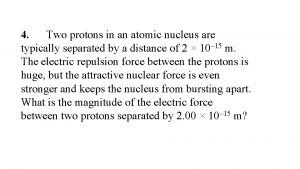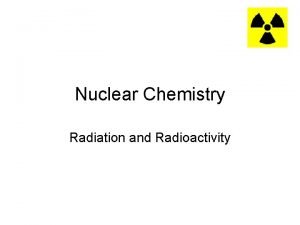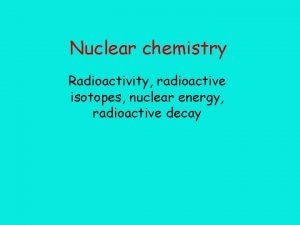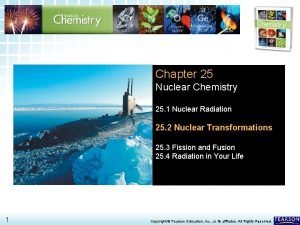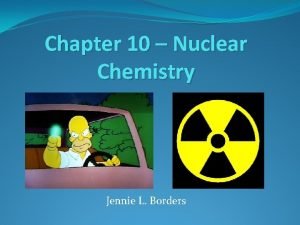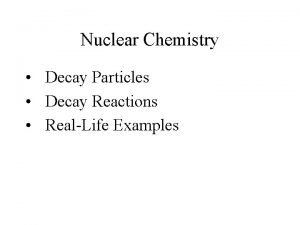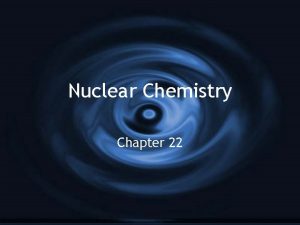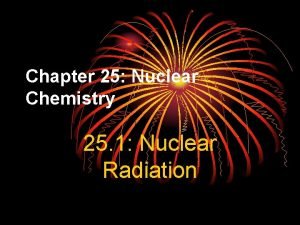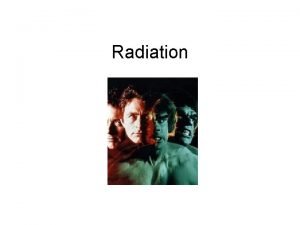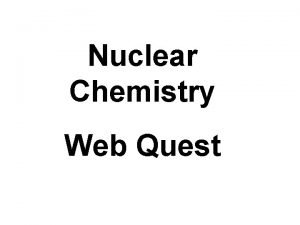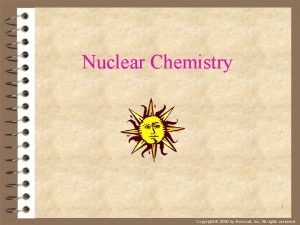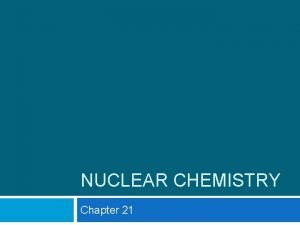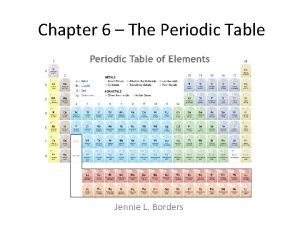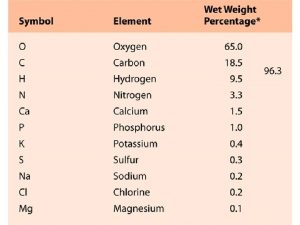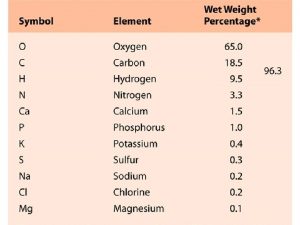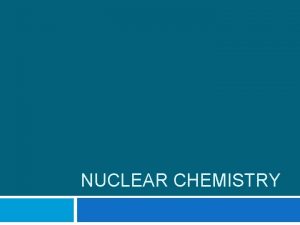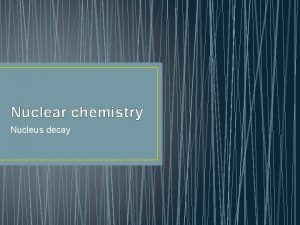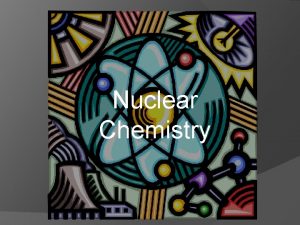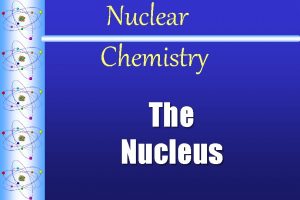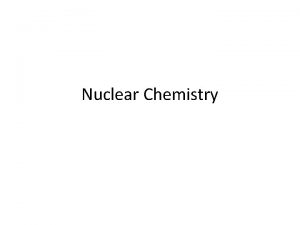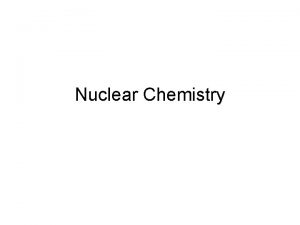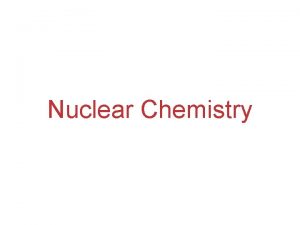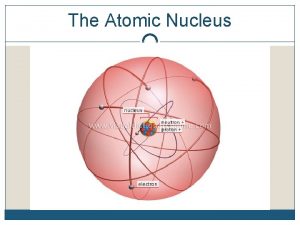Ch 21 Nuclear Chemistry The Nucleus n Protons















- Slides: 15

Ch. 21 Nuclear Chemistry

The Nucleus n _____: Protons and neutrons. _____: an atom, identified by the number of protons and neutrons in its nucleus. n Nuclides can be written with the name or symbol, followed by a dash with the mass number: ________, or as follows: Atomic mass = 35 Atomic number = 17 Cl 21 -2

The Nucleus ________: the difference between the mass of an atom and the sum of the masses of its protons, neutrons and electrons. n _________: the energy released when a nucleus is formed from nucleons. n __________: nucleons exist in different energy levels, or shells, in the nucleus. The numbers of nucleons that represent completed nuclear energy levels ~ 2, 8, 20, 28, 50, 82 and 126 are called Magic Numbers. n 21 -3

Radioactive Decay ________: a reaction that changes the nucleus of an atom. n________: a change in the identity of a nucleus as a result of a change in the number of its protons. Nuclear Particles n Type Alpha particle Beta particle Positron Neutron Gamma Ray Symbol 4 He 2 0 β -1 0 β +1 1 n 0 γ Charge +2 -1 +1 0 0 21 -4

Radioactive Decay 21 -5

Radioactive Decay __________: the spontaneous disintegration of a nucleus into a slightly lighter nucleus, accompanied by emission of particles, electromagnetic radiation or both. n ___________: particles or electromagnetic radiation emitted from the nucleus during radioactive decay. n __________: an unstable nucleus that undergoes radioactive decay. n 21 -6

Radioactive Decay ________ (α): two protons and two neutrons bound together, emitted during some types of radioactive decay. n 21 -7

Radioactive Decay __________ (β): an electron emitted from the nucleus during some types of radioactive decay. n 21 -8

Radioactive Decay _______ : a particle that has the same mass as an electron, but has a positive charge and is emitted during some types of radioactive decay. n 21 -9

Radioactive Decay _______ (γ): high energy electromagnetic waves emitted from a nucleus as it changes from an excited state to a ground state. n Example: Balance the following reaction: 212 Po → 4 He + ____ 84 2 Po → 42 He + 20882 Pb 1) Balance the following reaction: 253 Es + 4 He → 1 n + ____ 99 2 0 212 253 84 99 Es + 42 He → 10 n + 256101 Md 21 -10

Radioactive Decay ______ : the time required for half the atoms of a radioactive nuclide to decay. n 21 -11

Radioactive Decay ______: a series of radioactive nuclide produced by successive radioactive decay until a stable nuclide is reached. n 21 -15

Radioactive Decay _______: a very heavy nucleus splits into more stable nuclei of intermediate mass, starting a chain rxn. n 21 -13

Radioactive Decay _______: low mass nuclei combine to form a heavier, more stable nucleus. n 21 -14

Ch. 21 The End!
 Two protons in an atomic nucleus are typically
Two protons in an atomic nucleus are typically Fisión nuclear vs fision nuclear
Fisión nuclear vs fision nuclear Lesson 15 nuclear quest nuclear reactions
Lesson 15 nuclear quest nuclear reactions T half life formula
T half life formula Application of nuclear chemistry
Application of nuclear chemistry Irradiated food
Irradiated food Chapter 25 nuclear chemistry answer key
Chapter 25 nuclear chemistry answer key Chapter 10 nuclear chemistry
Chapter 10 nuclear chemistry Nuclear fusion in real life
Nuclear fusion in real life Application of nuclear chemistry
Application of nuclear chemistry Chapter 25 nuclear chemistry
Chapter 25 nuclear chemistry Anatomy of a wave
Anatomy of a wave Chernobyl webquest answer key
Chernobyl webquest answer key Nuclear chemistry
Nuclear chemistry Chapter 21 review nuclear chemistry
Chapter 21 review nuclear chemistry Effective nuclear charge trend
Effective nuclear charge trend
